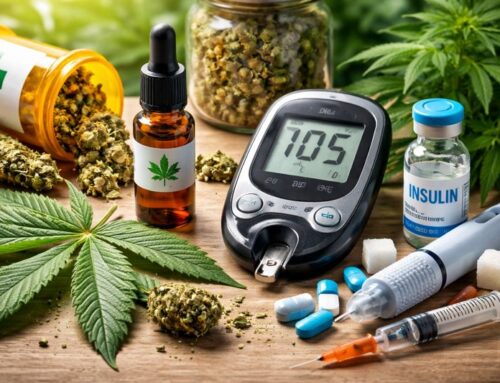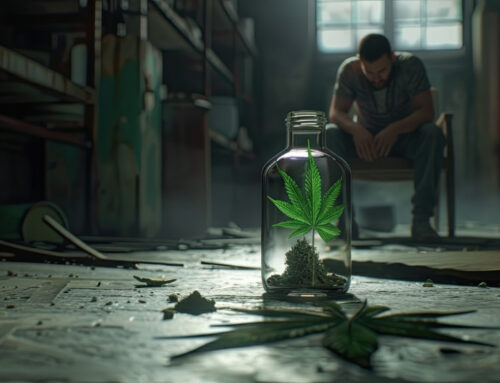The Difference Between Hemp and Marijuana
Introduction
If you’ve ever heard about medical Cannabis, then you must have probably listened to the terms related to Cannabis and medical marijuana: “hemp” and “marijuana.” Many people think they are the same thing. However, cannabis sativa plants, hemp, and marijuana differ in their usage and effects.
Despite coming from the same family tree as Cannabis sativa, hemp and marijuana serve different sociopolitical functions and are viewed very differently legally. It’s not surprising that they get mixed up. The confusion arises from their similarity in appearance and classification in biology.
Let’s discuss the difference between hemp and marijuana in the article. Moreover, how they are used, cannabis law for consumption, and why knowing the difference is important.
What is Hemp?
Hemp is a unique strain of Cannabis sativa. Unlike weed, hemp does not get you “high.” This is due to the low amounts of THC present in hemp.
THC is short for Tetrahydrocannabinol, which is the portion responsible for mental “highs” Zoning Out. Under current regulations, hemp is permitted to contain no more than 0.3% THC by dry weight. This minimal concentration is considered to be so small that it poses no risk to cognitive function or brain health.
Following are the products that are made from hemp:
– Rope
– Clothing
– Paper
– Hemp oil
– Construction materials
– CBD products
Hemp seeds and hemp oil are used in cooking and cosmetics. Farmers cultivate industrial hemp for these products. Industrial hemp has a long history of safe use spanning thousands of years. It is a versatile plant that has been utilized for various purposes, including textiles, construction materials, and even food products.
Hemp can now be grown and sold legally in the US with the passing of THC restrictions outlined in the 2018 Farm Bill. This bill significantly separated hemp from marijuana for federal law purposes.
What is Marijuana?
Marijuana is a variety of cannabis sativa, which differs from hemp since it contains a much greater quantity of THC. The THC in marijuana can range anywhere from 5% to 30% or even more. That is the reason why marijuana can change the way one’s brain feels and make one feel “high” or calm and “relaxed.”
Marijuana is used by people for different purposes:
– For enjoyment (recreational use)
– For chronic conditions (medical use)
In medicine, marijuana is prescribed for pain relief, anxiety, or sleeplessness. Such marijuana is sometimes called medical marijuana. While several states have embraced legalization, it’s still technically illegal at the federal level in the US, mainly because of the strong THC levels.
Unlike hemp, marijuana is not cultivated for products like rope or paper. Instead, marijuana is grown for cannabis products that are smoked, vaped or ingested.
The Main Difference
Although marijuana and hemp both belong to the same plant family, they have completely distinct uses. The most apparent differences are listed below:
- THC Volume
- In hemp, THC comprises 0.3% or less of its dry weight.
- In marijuana, THC levels can range from 5% to 30%, sometimes exceeding that.
This is why marijuana will get you high, but hemp will not.
- Purpose
Hemp serves as a source for:
-clothing
-rope
-paper
-certain types of CBD.
Marijuana’s primary purpose is for its psychoactive effects.
- Legal Situation
Regarding the 2018 Farm Bill, industrial hemp has been legalized in the United States. Marijuana is still illegal under federal law, although some states allow it for medical or recreational uses. Given these laws, people can live within the legal boundaries while making informed choices.
Why is there confusion?
Hemp and marijuana are very different substances, but many people still confuse them. The following are some reasons for this confusion.
- Appearance Similarity
Hemp and marijuana are both part of the same species of Cannabis sativa plant. They are tall with green leaves and flowers, so to someone who doesn’t really know the difference, they can look the same. However, they are actually very different on the inside regarding their THC content and usage.
- Laws That Are Out of Date
Hemp and marijuana were regarded as the same product under the law for a considerable time. The United States enacted a law in 1937 that categorized all plants containing Cannabis as illegal. This included both hemp and marijuana.
Such cannabis legislation is what made it difficult for people to uncover the truth. Farmers wishing to cultivate hemp had to abide by the same stringent laws as those trying to grow marijuana. It wasn’t until the 2018 Farm Bill that the federal government started distinguishing legal boundaries regarding hemp and marijuana.
- Cherished Facts – Missed Education
The separation of hemp and marijuana is a well-known distinction. Schools and the media have not effectively used visual aids to distinguish between the two. For this reason, some people still think both are interchangeable.
When people hear the word Cannabis, they go straight to thinking about drugs and getting high. Cannabis plants can be, and is, used for many things:
Some parts are safe and sound. For example, hemp seeds and hemp oil.
Some have strong effects. For instance, marijuana buds.
- Stigma Around Cannabis – Why It Is Misunderstood/Misinformation
Cannabis plants have long been misunderstood and associated only with the illegal trade of drugs. One tends to never speak of the advantages posed by hemp or medical Cannabis due to the stigma attached to those plants. Now that some laws are relaxed, we may still need clearer sentences to ensure the public understands what should be captured.
Why Understanding the Difference Matters
Knowing the difference between hemp and marijuana is important. Here’s why:
- Stay Safe: Farmers and businesses must be aware of the rules regarding these plants to avoid legal issues.
- Help for People: Some people use hemp or medical marijuana to feel better when they are in pain or worried. It’s essential to understand what is permitted and how it operates.
- Make Smart Choices: There are many cannabis products now, so it’s good to know what you are using.
- Better Laws: If more people understand the difference, it can help lawmakers create more effective rules.
Final Thoughts
Hemp and marijuana come from the same plant, but they are not the same. Hemp is used to make paper, fabric and oil. It has THC in tiny amounts, which means it won’t get you high.
You can get high on marijuana as it has a lot of THC. It is illegal in some parts of America, even though laws passed in 2018 made industrial hemp legal. The two products often cause confusion because they are similar in appearance.
In any case, the distinction needs to be made to ensure people can follow laws regarding both safely.
FAQs
Can hemp or marijuana help with diabetes?
Some people use medical cannabis for diabetes to help with pain, sleep, and stress. It doesn’t cure diabetes, but it may help manage symptoms. Talk to a doctor before using cannabis and diabetes control products.
Is cannabis good for meditation or relaxation?
Yes, many use cannabis for meditation rituals. Some strains help calm the mind and body. Just make sure you understand the type and THC content, especially if it includes Delta-9 THC, which can make you feel high.
What is Delta-9 THC and how does it affect me?
Delta-9 THC is the main chemical in marijuana that causes the “high” feeling. It’s found in larger amounts in marijuana but very little in hemp. If you want to avoid feeling high, choose hemp or low-THC products.
Which marijuana strain is best for pain relief?
A marijuana strain for pain often has a mix of THC and CBD. Some strains are made just for people with long-term pain. Ask a medical expert which one is best for your health condition.
Why does understanding hemp and marijuana matter for health?
Knowing the difference helps people choose the right products. For example, hemp is often used in CBD oils, while marijuana may help with medical cannabis for diabetes or pain. Picking the wrong one can lead to unwanted effects.





